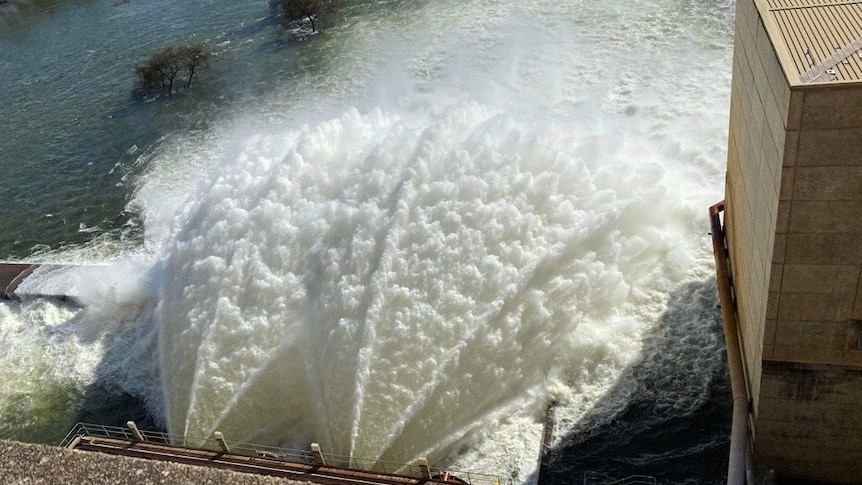Water flowing into South Australia has hit a six-year high at 53 gigalitres a day, as a report reveals full storages and wet conditions across the Murray-Darling Basin.
Key points:
- Flows into South Australia are the highest in six years, at 53 gigalitres
- Many storage catchments are reaching peak capacity
- Department for Environment and Water says the river flow peak is expected in September
The Murray-Darling Basin Authority’s (MDBA) Murray River annual outlook, released yesterday, showed southern basin storages are at unusually high levels for this time of year, with the Hume Dam sitting at 95 per cent capacity.
It comes as the Dartmouth Dam records 97 per cent capacity, the Menindee Lakes sits at 115 per cent capacity and Lake Victoria at 62 per cent.
The MDBA said the storages have been bolstered by healthy flows entering the Murray River from the Murrumbidgee and Goulburn rivers and other Victorian tributaries.
“The primary purpose of both the Dartmouth and Hume Dams is to store water to meet irrigation and other entitlements, so that’s our focus,” MDBA executive director of river management, Andrew Reynolds said.
He said irrigators and environmental water entitlement holders were in a good position to receive full entitlements this season, and that the MDBA was set up to manage the risk of shortfalls.
“If we do get a sudden hot period of weather and a spike in demands, it can be a bit harder for us to manage, but we’ll work closely with the Bureau of Meteorology to adapt to the season ahead,” he said.
Caution urged for river users
At the South Australian border, Murray River flows have reached 53 gigalitres of water a day for the first time in six years, prompting one river council with low-lying areas to issue a formal warning.
Mid Murray Mayor Dave Burgess said river users and property owners in the district are encouraged to be wary of faster currents, higher water levels and submerged debris.
“We don’t expect to reach flood risk levels, but based on current forecasts, we’re encouraging property owners and residents to take precautions just in case,” he said.
When flows reach above 60GL a day at the SA-Victoria border, low-lying areas and flood plains become inundated and flood advice is issued to shack areas between Cadell and Mannum.
Even bigger flows on the way
Heavy rains in the upper parts of the Murray and Murrumbidgee catchment last weekend totaled up to 150 millimetres in rainfall in some areas, which means South Australia’s flow levels are yet to peak.
The MDBA has commenced airspace management releases from the Dartmouth and Hume Dams, and big releases from Burrinjuck Dam in the Murrumbidgee system.
Department for Environment and Water manager of water delivery Chrissie Bloss said peak flows were still four to six weeks away.
“It’s really too early to forecast what those peaks might look like, but what we know for certain is that flows will be elevated for some months in the Riverland,” she said.
.

